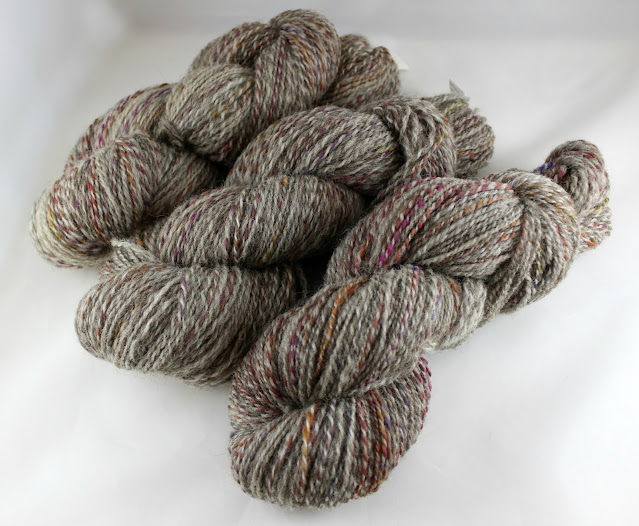I have taken a deep breath and just got on and finished up
something that I started months and months and months ago. I got sick of looking at it, sat there in a bag staring at me, pulling faces at me. That's what it felt like at times. It was one of those projects that I wanted to do but then couldn't bring myself to finish what I started. Lockdown hasn't helped at all.
So, I finished all six skeins as intended earlier this year. Now that I have finished it I do actually like the way it looks as it is but I still also want to know what it will look like if I over-dye it blue so I will keep 3 skeins as it is and dye 3 skeins blue.
I had about 85g of spun single left over from the lightest grey part of this project at the end so what I decided to do was to put together some odds and ends and spin another single and ply them together and then add the finished skein to the dye pot when I dye the other 3 skeins blue. The beige-yellow part that I used in this blend is from the same fleece as the rest of the Jacob and is what I had tried to dye using Marigolds in this post
here. The other bits and pieces were all from a lap waste bag. It all went through my blending hackle to produce the bump of fluff in the biggest photo below.
I spun it up and plied with the left over and then there was still a small amount of leftover, which I just plied back on itself to produce a tiny little skein of pure Jacob wool. In the photo of the two bobbins, the darker one is the new blend I just created and the light one is the last of the Jacob.
The new large skein works out at approx 64.5% Jacob wool, 15% Corriedale wool, 11% Merino wool, 7% Icelandic wool, 2.5% Mulberry Silk. The small skein is 100% Jacob wool.




















